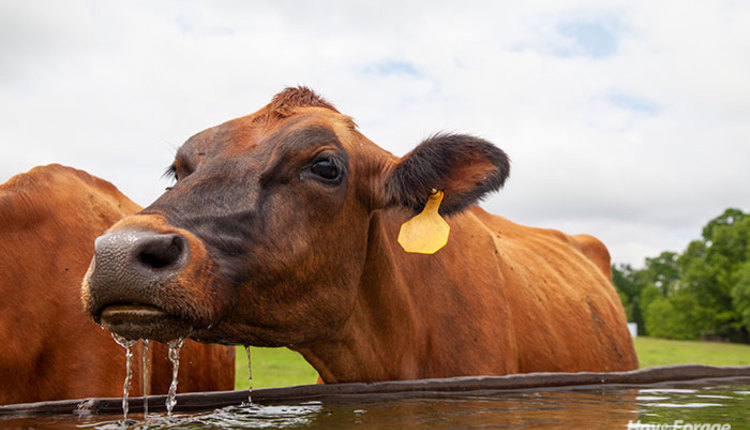
Growing up on a farm raising 4-H livestock projects, my family and local extension agents always told me if I wouldn’t drink the water in the troughs, I shouldn’t expect the livestock to drink it either. The importance of clean water and stock tanks is stressed in a recent Alabama extension publication called “Keeping It Clean: Livestock Water Tank Maintenance.”
Quantity
Many factors play into the amount of water cattle drink. Healthy beef cattle will drink between seven and 30 gallons of water in a single day. Age, weight, pregnancy or lactation, dry or green forage available, and water quality all affect water consumption.
Cause for concern
During summer months, it can be difficult to keep water tanks clean, but it is important to rise to the challenge. Warm temperatures, ample sunlight, and nutrients introduced through cow saliva, manure, and other debris create a perfect breeding environment for algae such as cyanobacteria to grow, which can release toxins into the water and make cattle sick.
Getting control
Farmers can take preventative measures to keep tanks clean. Continually check for foreign objects in tanks that may cause algae growth; leaves, urine, and feces are all linked to intensified algae blooms. Monitoring water pH, salinity, and water temperature can also mitigate algae growth.
Physical barriers are another strategy to preserving water quality. Placing rails around tanks will reduce the amount of feces and debris deposited into the tank by cattle. When using a rail, be sure to position the rail low enough that cattle cannot slip under it and become trapped, which can result in drowning.
Tank location can also discourage algae growth. Placing tanks in shaded areas reduces the amount of direct sunlight the algae receives and therefore reduces growth potential.
How to clean
Dumping tanks and refiling them with fresh water alone will not control algae growth. Adding 2 ounces of household chlorine bleach per 50 gallons of water weekly will effectively restrict algae growth. However, when you do choose to dump, clean, and refill tanks, this regiment is recommended:
• Add one-part household chlorine bleach per 32 parts of water.
• Let the water sit for 15 minutes.
• Drain and scrub the tank wall.
• Rinse the tank; refill it with clean, fresh water. Add 2 ounces of bleach per 50 gallons of water.
• Keep livestock away from the tank for at least 30 minutes after cleaning.
Goldfish are another option for algae control. By adding four to six goldfish per 100 gallons of tank capacity, the fish will feed on the algae and help preserve water quality. If you choose to add goldfish to your stock tanks, keep these things in mind.
• Place bricks or rocks in the bottom of the tank for the fish to use as shelter from predators like birds and raccoons.
• Monitor tank levels. If the water level gets too low, or if the water is poorly oxygenated, the goldfish will die.
• Fish survive best when water temperatures are at least 60°F.
• If fish do die, immediately remove them from the tank. Toxins released after death can be as problematic as toxic algae.
Routine tank cleaning and quickly addressing problems will help ensure both water quality and herd health.

C.J. Weddle is serving as the 2020 Hay & Forage Grower editorial intern. She currently attends Mississippi State University, majoring in agricultural education, leadership, and communications. She grew up on a farm in Vardaman, Miss., where her family raises sweet potatoes and soybeans.

